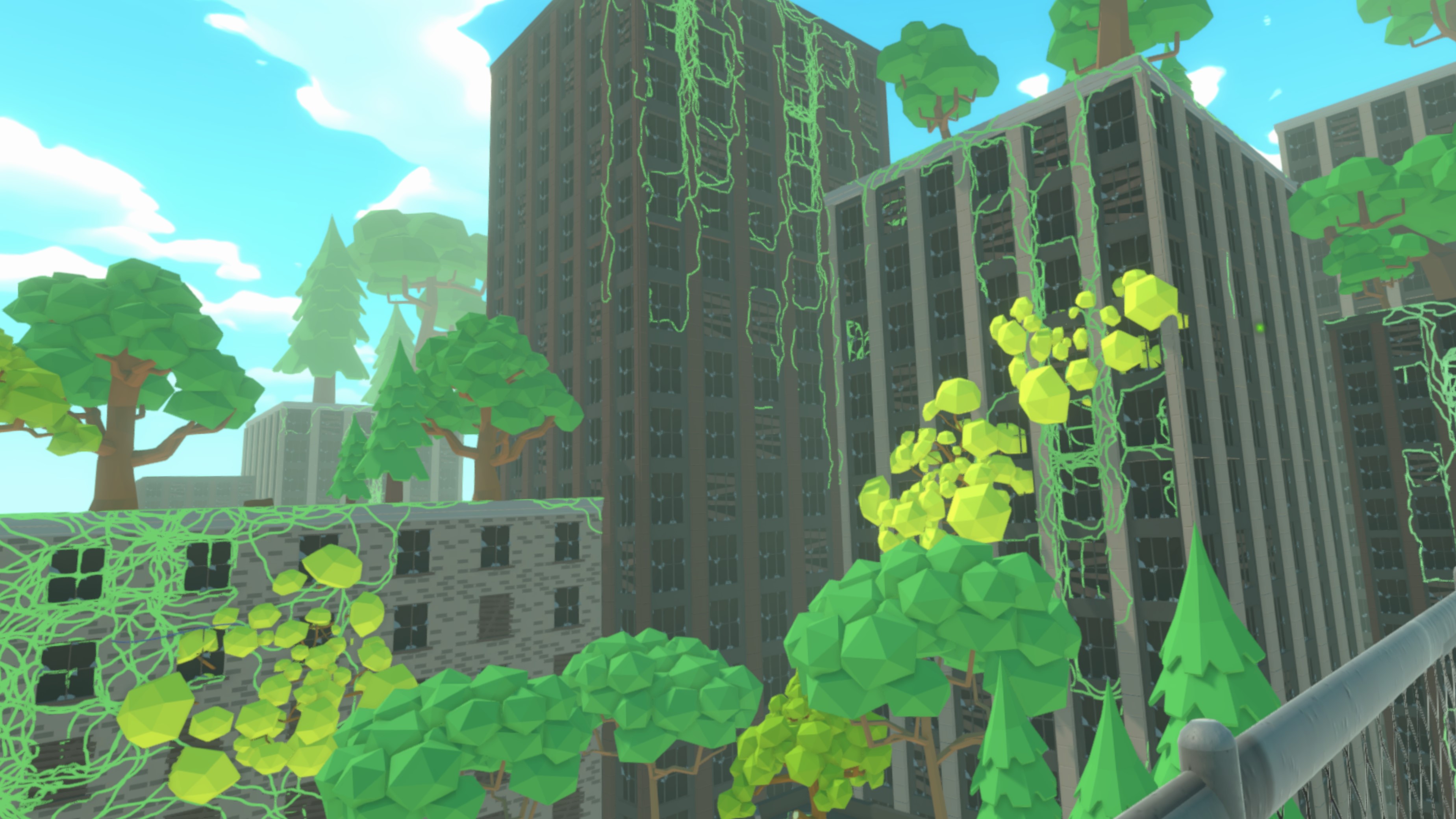
In Bloom
In Bloom is a VR puzzle game created over the course of two months in a team of 4 for the intensive "Semester in Alternate Realities" course at Simon Fraser University. For this project, I was the lead game designer, and one of two programmers. This project was made in the Unity game engine.
SFU SIAR Program, Summer 2023. Professor Bernhard Riecke.
Stephen Kerschbaumer: Game Designer, Programmer, Level Designer, UX, and SFX
Sahba Hajihoseini: Lead Programmer, AI Designer, and Sound Design
Tatum Fry: Prop Designer, Environment Designer, and Character Designer
Emmanuel Navas Castro: Animator, Texture Artist, and SFX
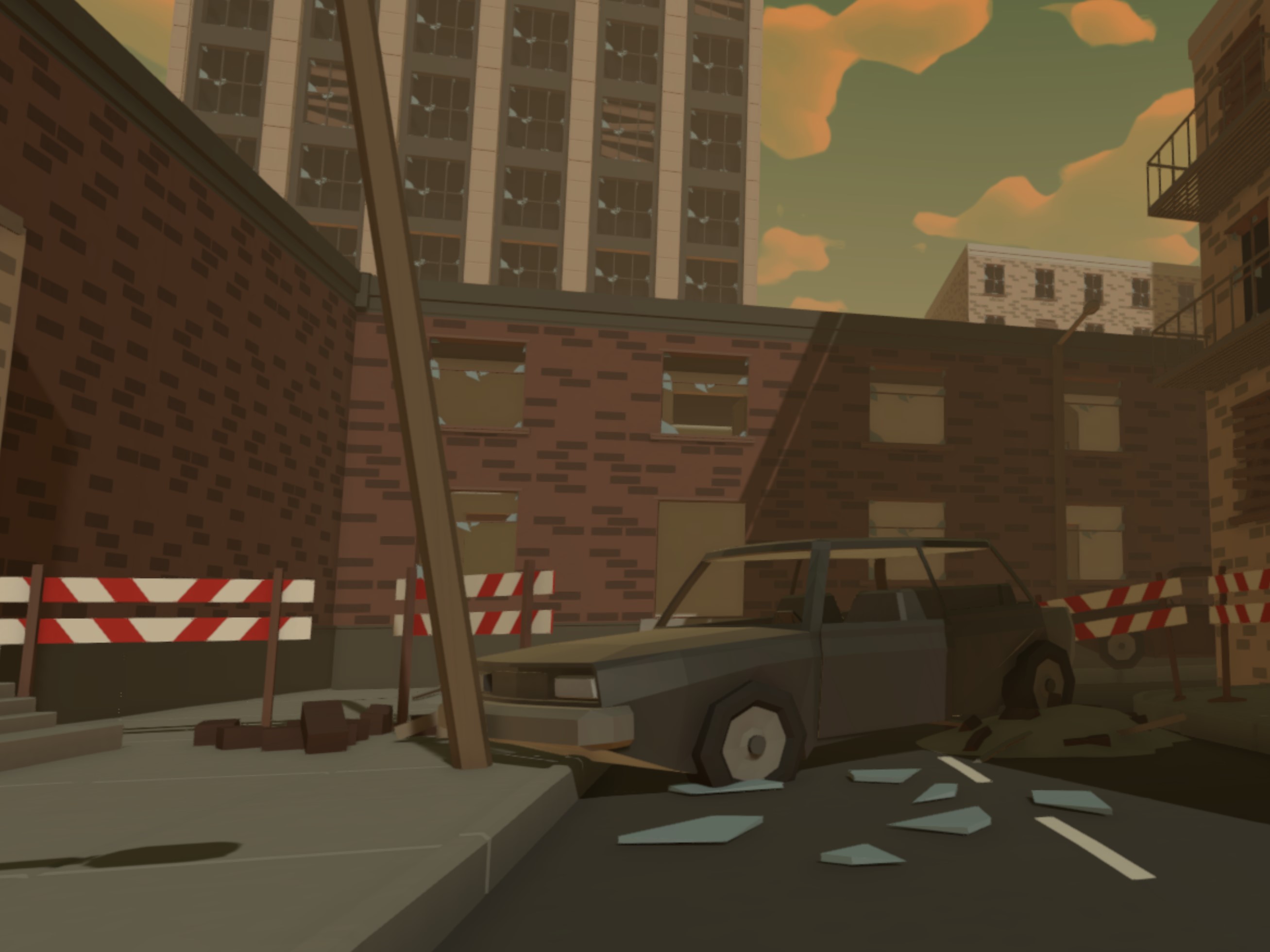

The game is centered around themes of nature and climate change. The player starts in a desolate and polluted city, and must learn to work with a small, magical creature in order to bring life back to the city. Our challenge was to create a project which used the medium of VR for good, and we did so by creating a game which spreads messages of harmony with nature and collaborative problem solving using the innate empathetic affordances of VR.
Game Design
The core gameplay mechanic of In Bloom is effectively playing fetch with your companion character. The companion will run towards marshmallows the player tosses around the map, allowing the player to command and collaborate with it. I pitched this concept to my team because of its simple and intuitive nature that fits the medium of VR well. VR presents a number of challenges for designers, one of the most important being control and navigation, which can often feel obtuse and confusing. Our concept calls upon basic human instincts and gestures such as spatial exploration, pointing, and throwing, all of which are enabled by the enhanced spatial presence provided by VR.
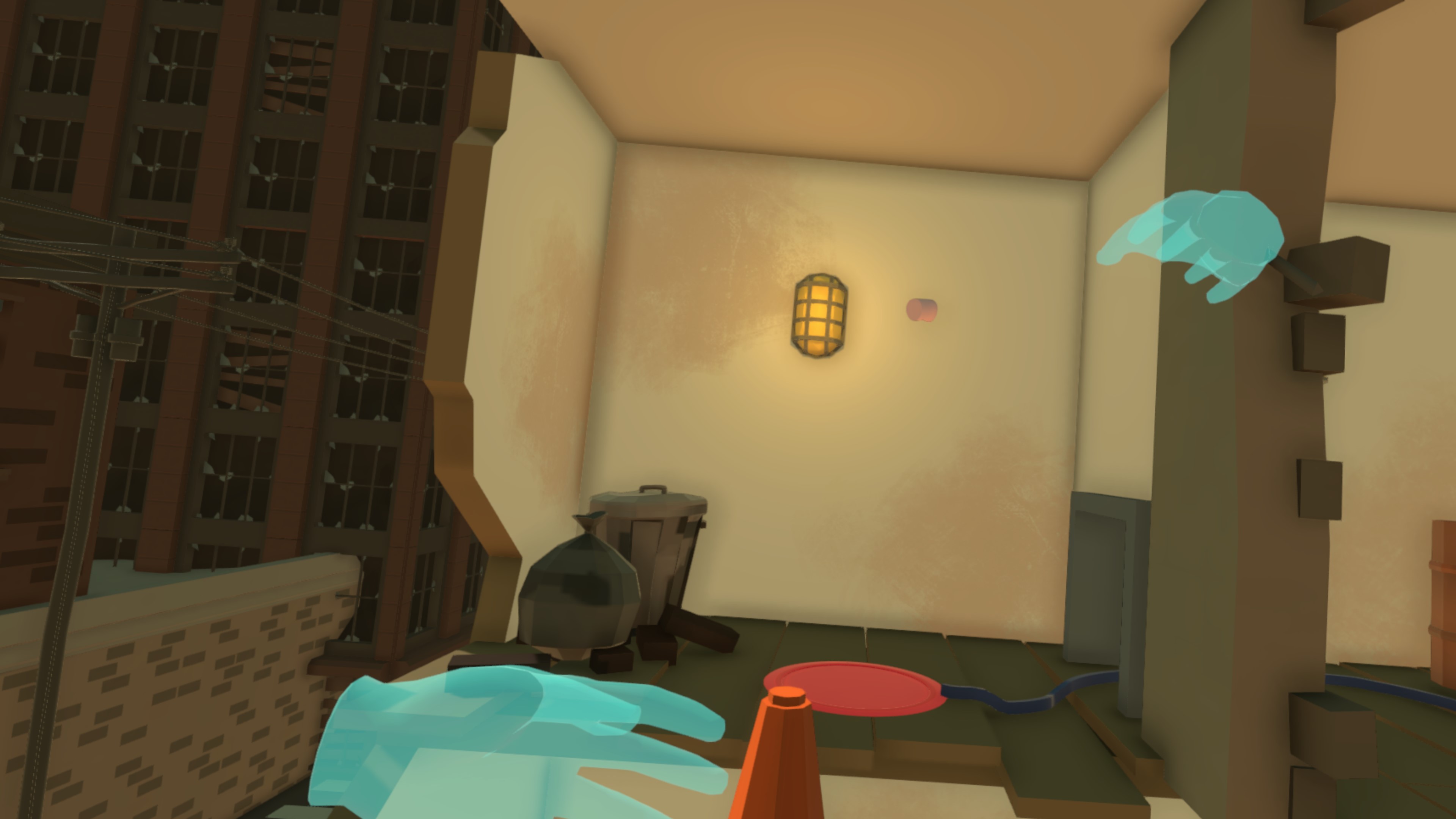
The player throws a marshmallow onto a large button.
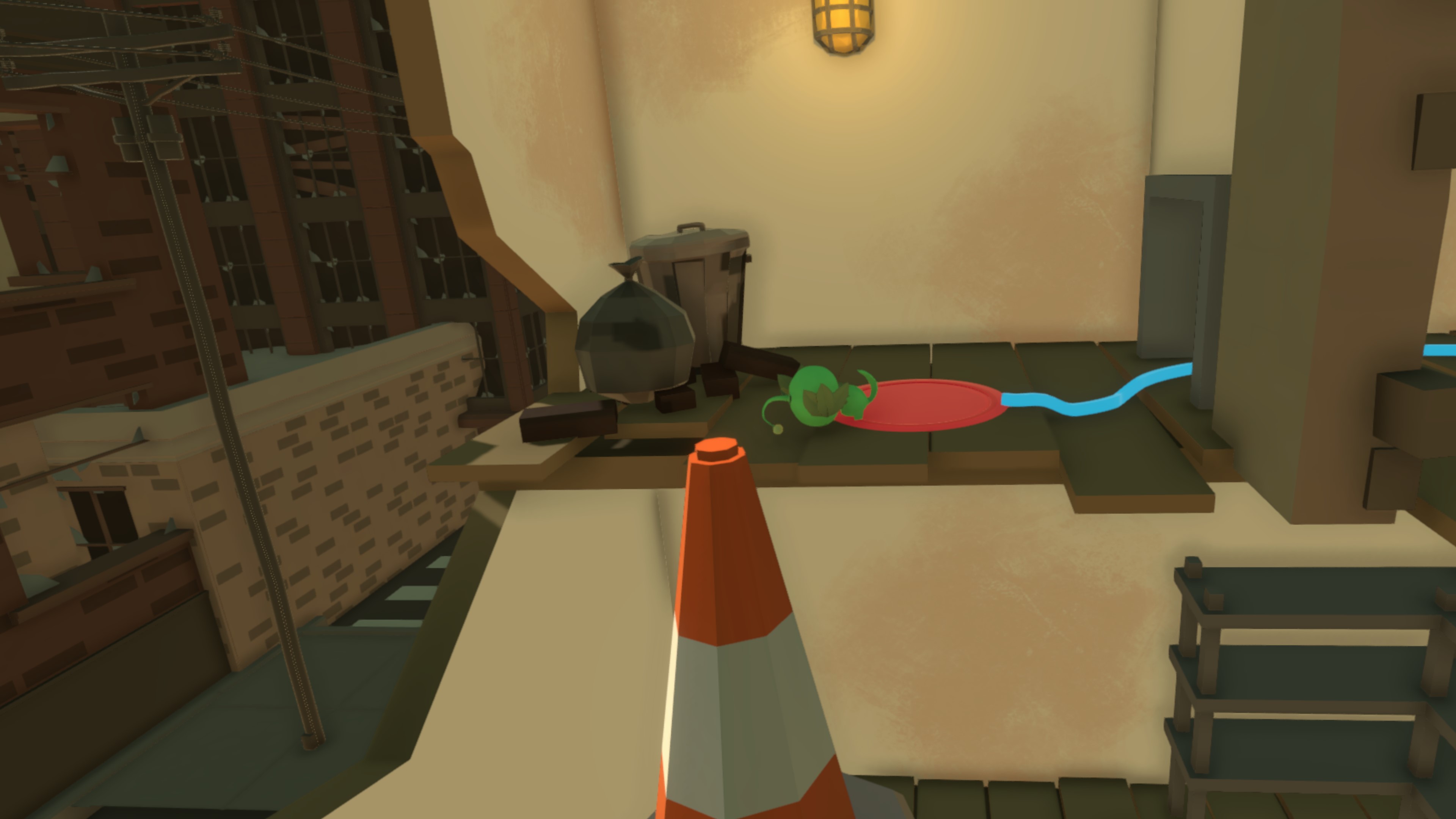
The companion runs to eat the marshmallow. In doing so, it activates the button below it, opening a door.
Because the user's relationship with their companion is so integral to the narrative we were trying to tell through gameplay, many of my design decisions were made with reinforcing this narrative in mind. One of the most integral elements of this was making sure that the companion responded to the user's actions, no matter how minor; the user is confined in how they can influence the world, so we needed to make sure that whatever ways they do interact are made tangible. The companion creature turns to face the user, chases after them, eats out of their hand, and can even be pet. During our showcase we noticed users sitting down, getting closer to the creature, just so they could play with it. This is one of our greatest benchmarks for successful immersion, the user acts in ways that are not necessarily productive and do not move gameplay forward, they simply act for the sake of enjoying and relating to the game world.
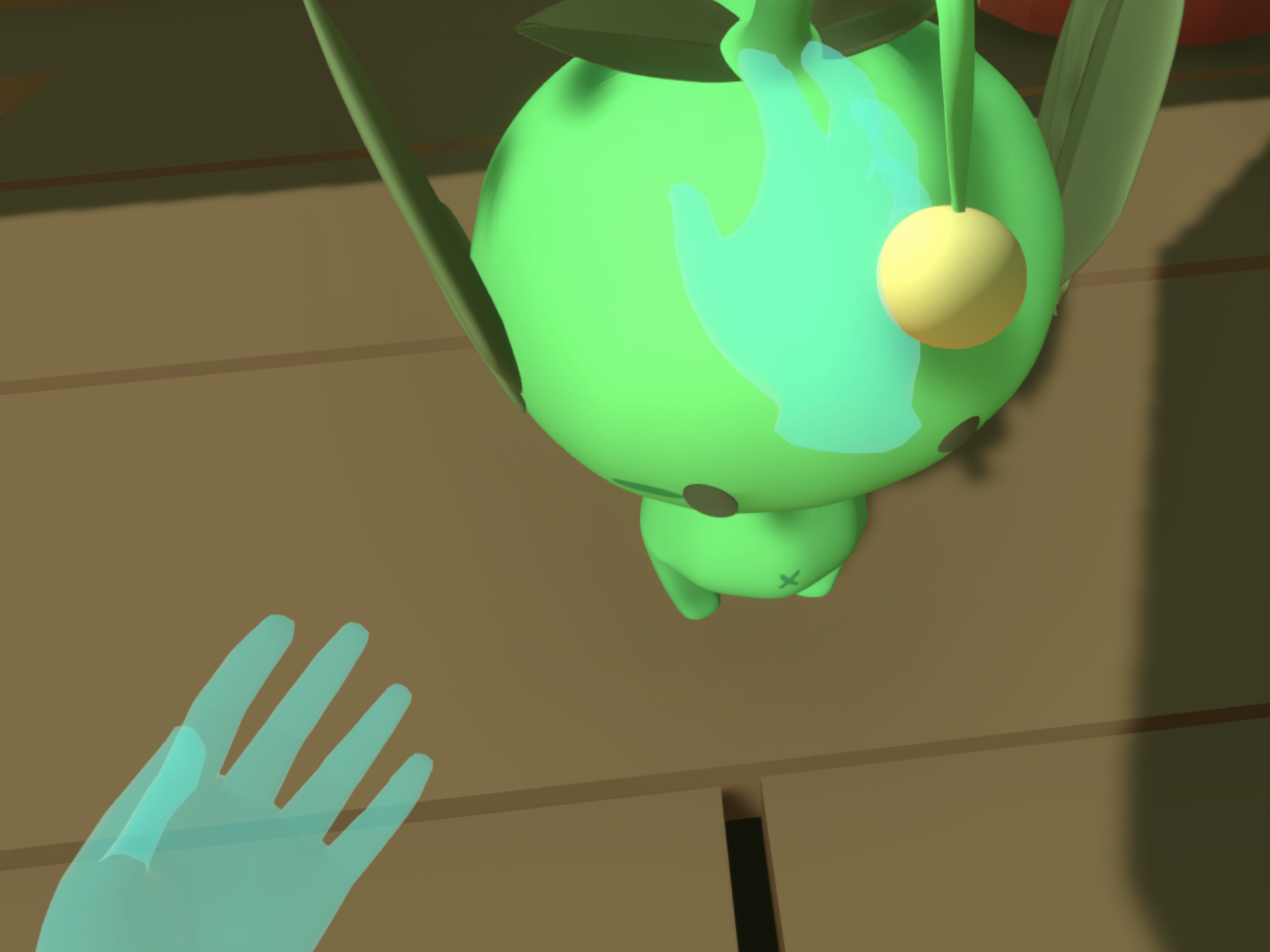

Systems Design
As a programmer and designer, I was responsible for building the character controller for this project. Another substantial design challenge which one must overcome while designing for VR is ensuring player comfort throughout, and giving adequate feedback upon simulated actions. The movement system I created includes motion dampening, vignetting, and snap turning, all of which are toggleable to account for different preferences and comfort levels with VR. We underwent multiple rounds of playtesting to create a set of mechanics we were confident in letting the public play without concern for nausea or sim sickness. This process involved weekly playtesting sessions we held after class, where at the end we asked playtesters to fill-out surveys such that we could measure any positive or negative changes made.
Level Design
Taking advantage of VR's immersive nature, the levels and their puzzles are based on spatial exploration and problem-solving. As the game was built to be shown in a public showcase, where people of all skill levels could play, no puzzle could be too hard, as to not stump novice players. Because of this, I had to find ways to make the puzzles satisfying to complete, even for experienced gamers, all while being simple enough for a beginner player to figure out just by thoroughly exploring the space. Larger spaces were broken-down as to be easily digestible and not overwhelming, and puzzles were given clear visual and audio indicators, taking advantage of spatial design techniques such as contrasting lighting, strong visual hierarchies based on patterning, and clear segmentation of space.
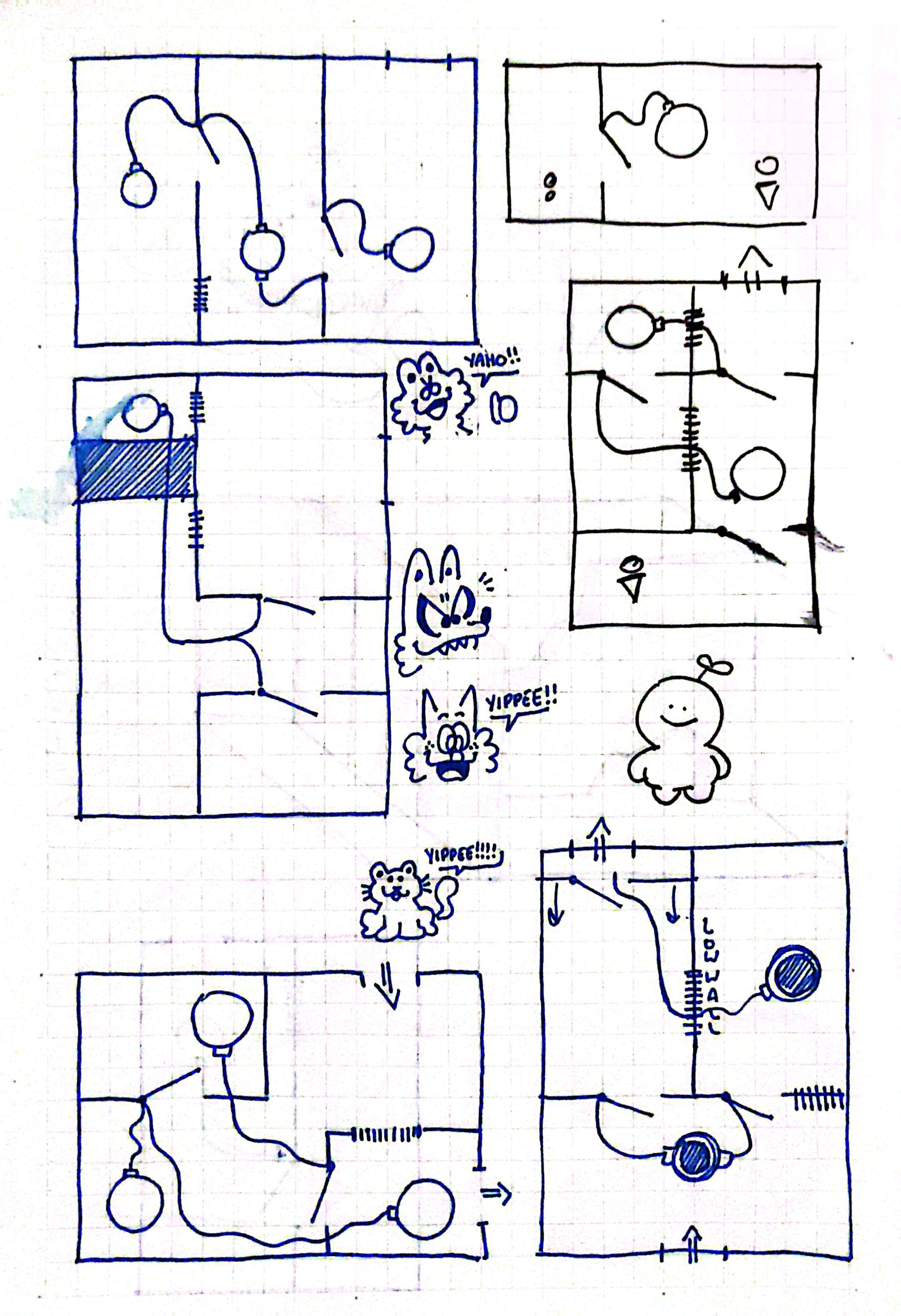
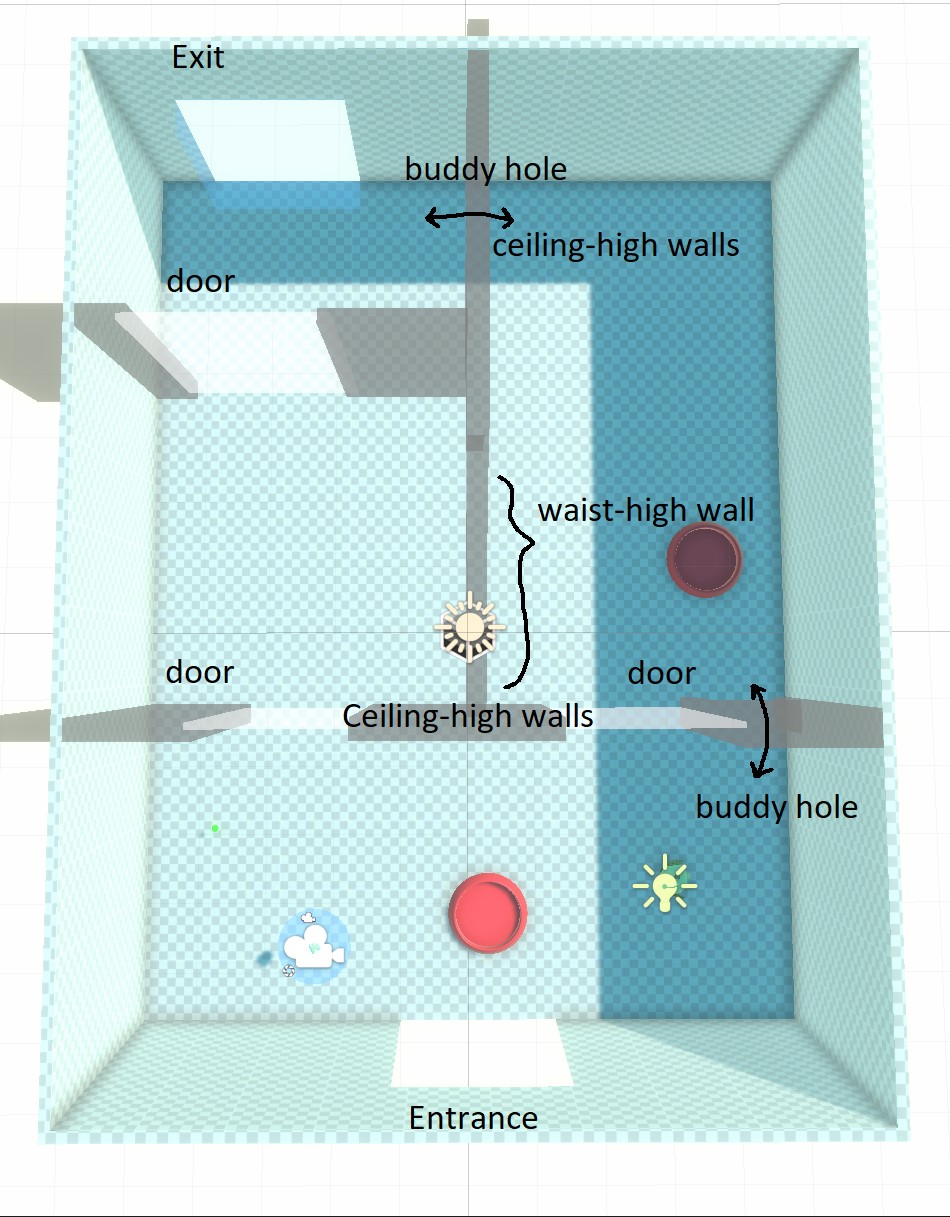
The levels started as sketches in my notebook as part of rapid ideation. Next, I greyboxed them in Unity's probuilder 3D modeling software.
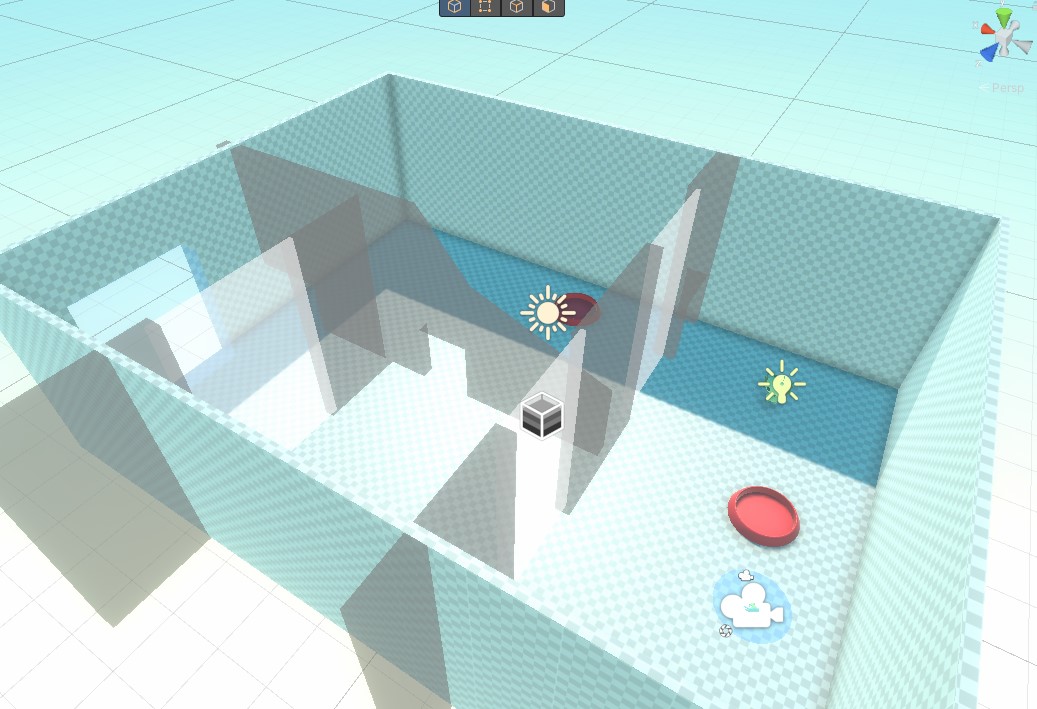
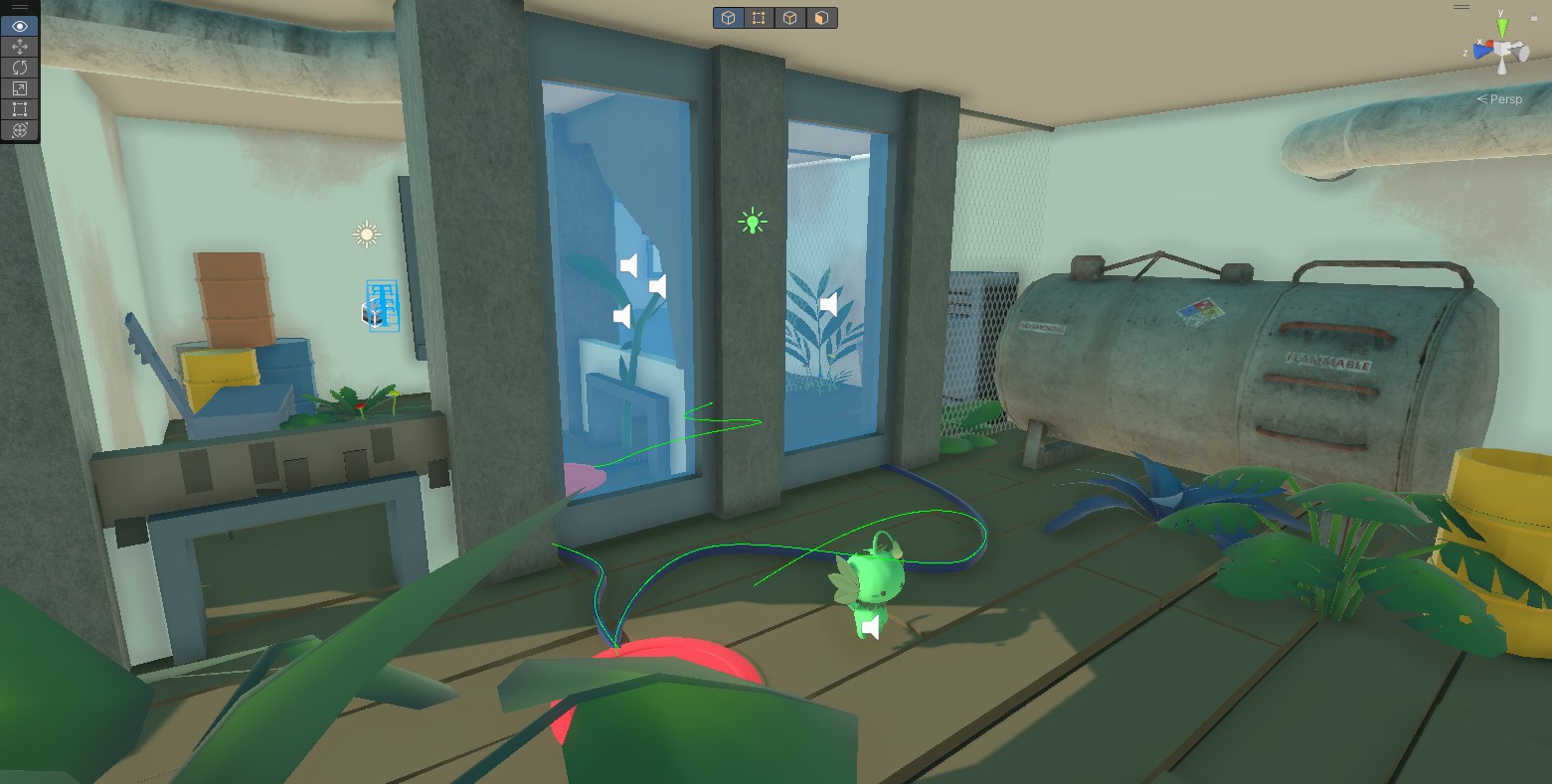
After testing, they were exported for refinement in Maya by our environmental designer, following my annotated diagrams explaining key features crucial to the puzzle's function. We then decorated the level together in-engine.
Level Walkthrough
This is the final level of the game. As this game was built as part of a public showcase, where we were anticipating people of any skill level, it is not particularly difficult, though it does require lateral and spatial thinking to solve. In this walkthrough, I will be describing the correct path, and noting points of challenge for the player throughout.


Player enters the level:
The player enters the level and sees two doorways (Doors A and B) before them, both attached to a pressure-activated button (Button A) as indicated by the large wires leading from it. They can see through the clear doorway that there is another button though the left path (Button B), which is connected to another door (Door C) out of reach. To the left there is a small doorway that is just large enough for their companion to fit through (Partner Passage A).


Player stands on Button A:
By standing on Button A, the player opens Doors A and B for their partner to pass through. By sending their partner in through Door A, they can have it stand on Button B. In doing so, they open Door C, presenting the exit. This might seem like a solution but is a red herring, as when the player steps off of Button A, Door B closes before them, preventing further progress.


Partner is placed on Button A:
Instead, the player may choose to place their partner on Button A, opening Doors A and B. They may then progress through Door A to stand on Button B in order to open Door C. This would again seem like a potential solution, though they will quickly realize this will not work when they step off Button B, and Door C in turn closes.
This does give the player the opportunity to make further observations on the level, though. They might notice that the wall separating the two rooms behind Door A and B is broken, allowing for them to reach over it, and throw their bait through it. At this point they will also likely have observed both Partner Passages, giving them an idea of how they might position their partner.


Player moves though Door B:
With the partner on Button A, the player moves through Door B. Here, they can then reach through the hole in the wall in order to send their partner to Button B, in the process closing Doors A and B, with no means of reopening them.
Until the player has explored the space, this may seem counterintuitive, as it causes them to trap themself between Doors B and C. As this is the last level, it serves the purpose of the narrative, for them to put themself in a vulnerable, trapped state, and to rely on their partner in order to escape.


The Player has completed the level:
When the player solves the puzzle by positioning their partner on Button B, opening Door C, the exit opens and their partner runs to it. The partner begins to dance and plants spread throughout the level.
Project Management
For this project, I took on the responsibility as team leader as I felt my experience across the various fields of programming, 3D modelling, and game design could help lead the team in project coordination. My top priority in this sense was ensuring every team member was enthusiastic for the project we were building, and felt heard in our meetings. At the start of every work day, I would hold informal "stand-ups" where I would check-in with my teammates to see how they were doing and review their work. This gave us a great sense of community and let everyone be engaged with each aspect of the project and give feedback, even if they were never directly involved with it.
Our team decided to use the SCRUM framework to guide or process. This was the first time the majority of us had used a productivity methodology such as SCRUM, so it was an important learning experience. In the end, I think it proved to be successful, as the daily sprints ensured we were making steady progress on the project. Because of this, we had minimal crunch at the end of the semester, with all of our work being finished and in a presentable state comfortably before our agreed-upon deadline.
Reflection
I am incredibly proud of this project, as I believe it clearly demonstrates a number of my greatest strengths as a game designer. The integration of core mechanics, narrative, and level design makes for an experience that is approachable yet deep in its gameplay and message. If I were to have more time, I would want to further refine the level designs and experiment with new puzzle mechanics and layouts.